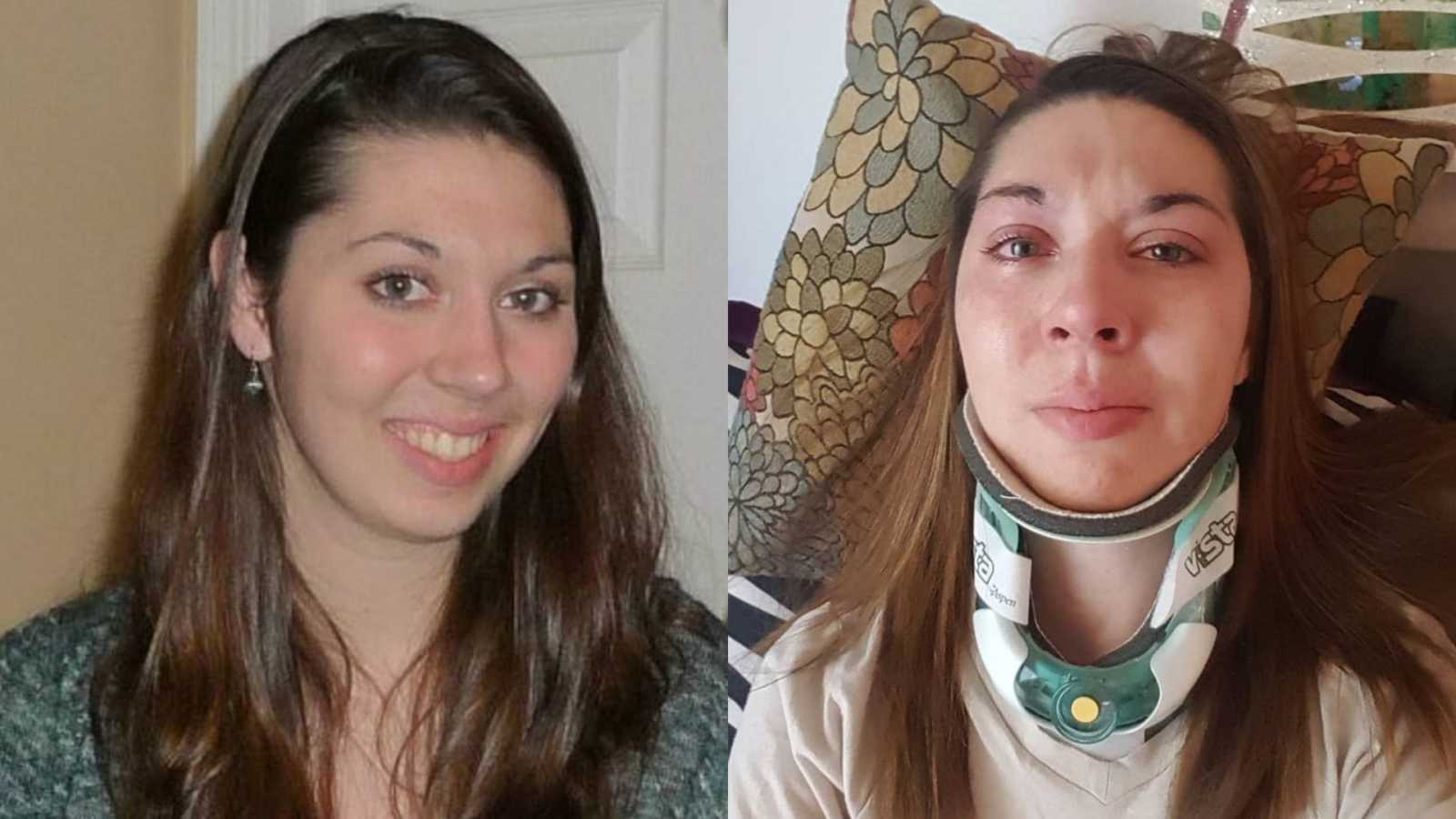“How in the world does one go from being an athlete to becoming a ‘professional patient’ and enduring 35 surgeries all because of ONE fall? It sounds made-up. I can assure you it is not because I live it and I have the scars to show for it. When I look back on the past 13 years of my life I’m baffled. I oftentimes think to myself, ‘How did this happen? How did I survive all of this?’ Well, this is how…
It’s September 21, 2005 – a date I will never forget. This day is just like a birthday marked in a calendar. Instead of a celebratory day it is a day that marks when my life changed forever. I remember that day with such clarity. The details are etched in my mind. I was 16 years old and it was a beautiful, hot, sunny day. I was a junior in high school and was looking forward to soccer practice.
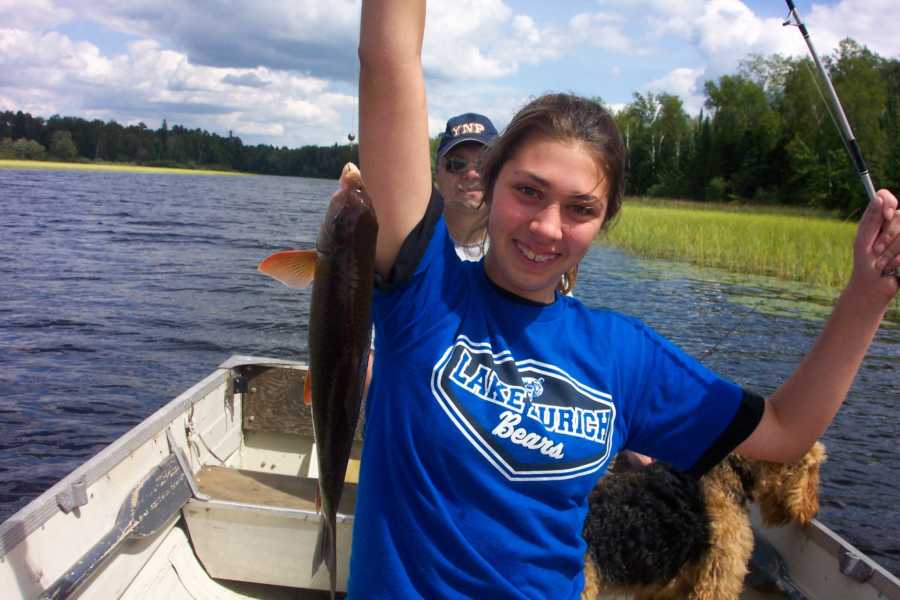
The last period of the day was gym class. We were playing flag football. I was and still am a competitive individual. I was getting irritated that the guys in our class wouldn’t throw the football to any of the girls. Our teacher blew the whistle to indicate class was over in 5 minutes. In those 5 minutes, I made the decision to jump up with all my might to try to catch a football as it spiraled through the air. I knew the football was too high to catch, but the competitive side got a hold of me. In my mind if I caught the football, it would be a great catch, and if I didn’t, it wouldn’t be a big deal. Looking back, it’s funny I didn’t think it would be a big deal because my decision to jump for a football changed the trajectory of my life forever.
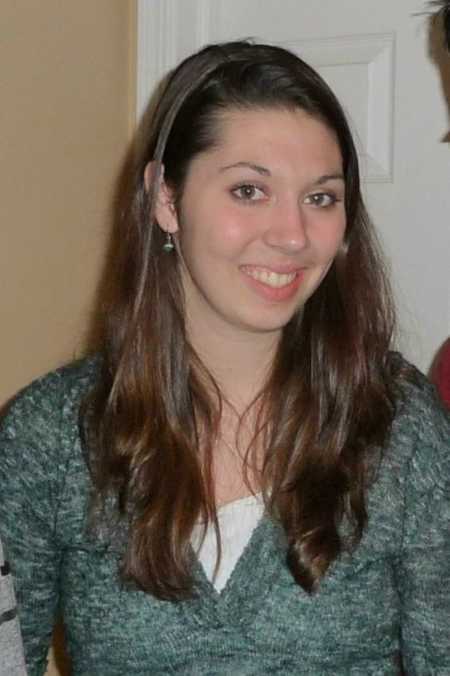
While in the air I realized my body was off balanced. I twisted my body as my eyes frantically looked left and right to see if there was somebody there to grab on to. Unfortunately, there wasn’t. The next thing I knew, I heard two audible pops from my right ankle as I landed on my right leg extremely hard. I grasped the turf field as I watched my ankle swell more and more by the second. It was at this time when a life of athletics was traded for a life of surgery.
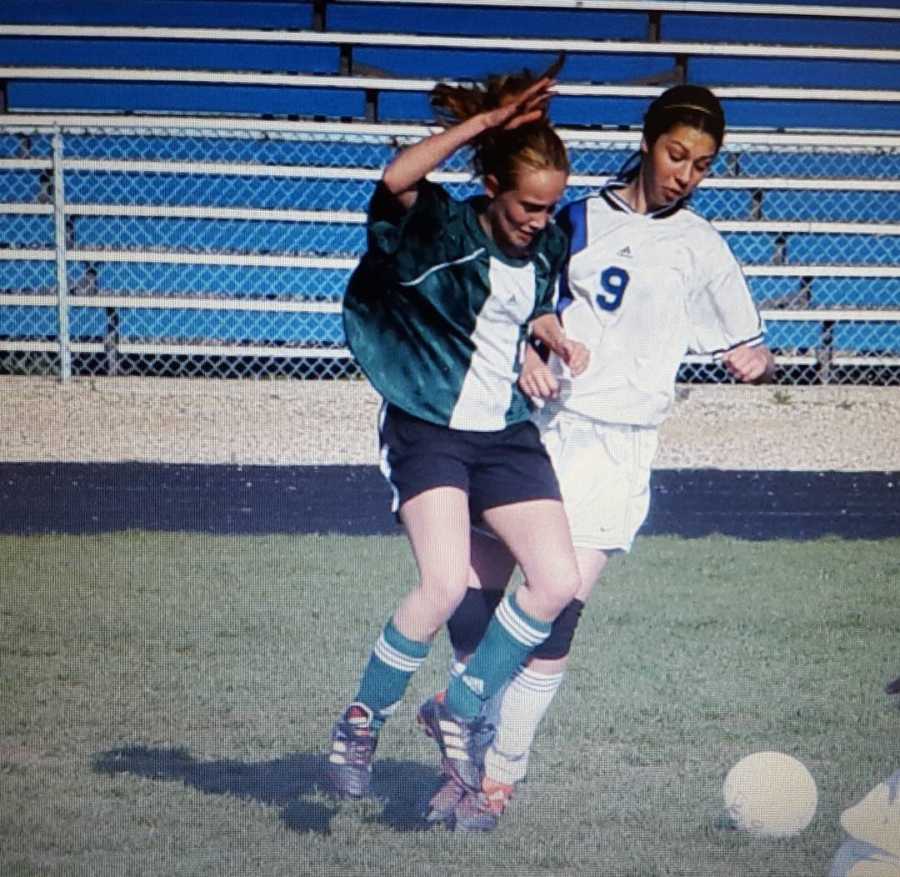
I never could have imagined this bad landing would lead to a domino effect of injuries. I needed surgery on my right ankle, two on my right knee, and both hips. Mentally it was draining because just when I thought I was doing better from a surgery and allowed to put more weight on my leg, the next joint injury was apparent. Due to all the leg surgeries, I was on crutches for a total of 16 months. My shoulders and shoulder blades (scapula) started hurting me a ton. It had seemed as though my body was falling apart.
In 2007 I was evaluated for a genetic connective tissue disorder called Ehlers-Danlos Syndrome (EDS) which causes the body to produce faulty collagen. Collagen is like the glue that holds your body together. This can lead to joint dislocations, subluxations, easy bruising, pain, trouble healing, and a multitude of other issues and comorbidities. I had a genetic blood panel done and met with a team of doctors who told me I didn’t have any type of connective tissue disorder. They also doubted the pain and symptoms I was experiencing with my scapulas. It can be very difficult to be a teenage girl and be taken seriously. This wasn’t the first or the last time I’d be doubted about my symptoms. Being doubted really plays with your head. I was never a dramatic attention seeking individual. Luckily, I had one surgeon who did believe me about my scapular pain. He said, ‘You could travel out of state to see a surgeon, or wait 10 years for technology to advance.’ My parents and I traveled and a few months later I had surgery on my shoulder blades to reattach muscles to my scapula.
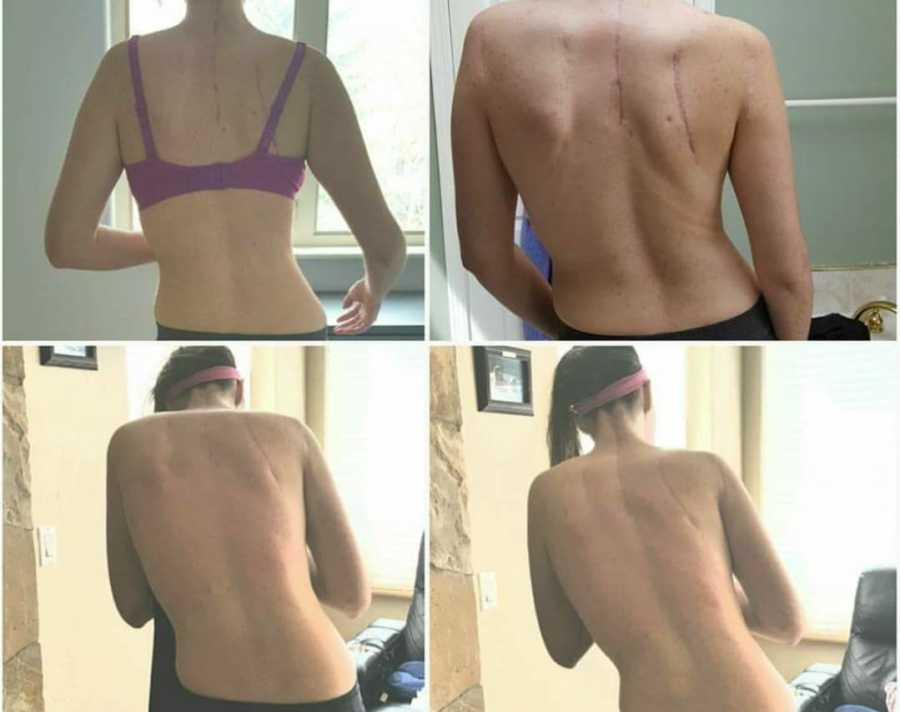
Fast forward to 2015 and things still weren’t adding up. I was now experiencing a lot of neck pain with neurological symptoms. I had 19 surgeries between both scapulas and shoulder joints. Doctors would say my tissue is stretchy, you just have loose joints, or I’m ‘collagen deficient.’ I was finally referred out to a new orthopedic for my scapulas who said, ‘You have EDS. I have seen this scapula problem before and I can help you.’ There are no words to describe what it’s like to be validated after so many years of having many issues, losing weight, and doctors looking at me skeptically. The emotions walking out of that appointment were many. To be treated with respect was satisfying. There was relief I had found help. My ortho also told me my neck was extremely hypermobile and there’s a problem. The motion was described as what you would expect to see in a person after they were hung.
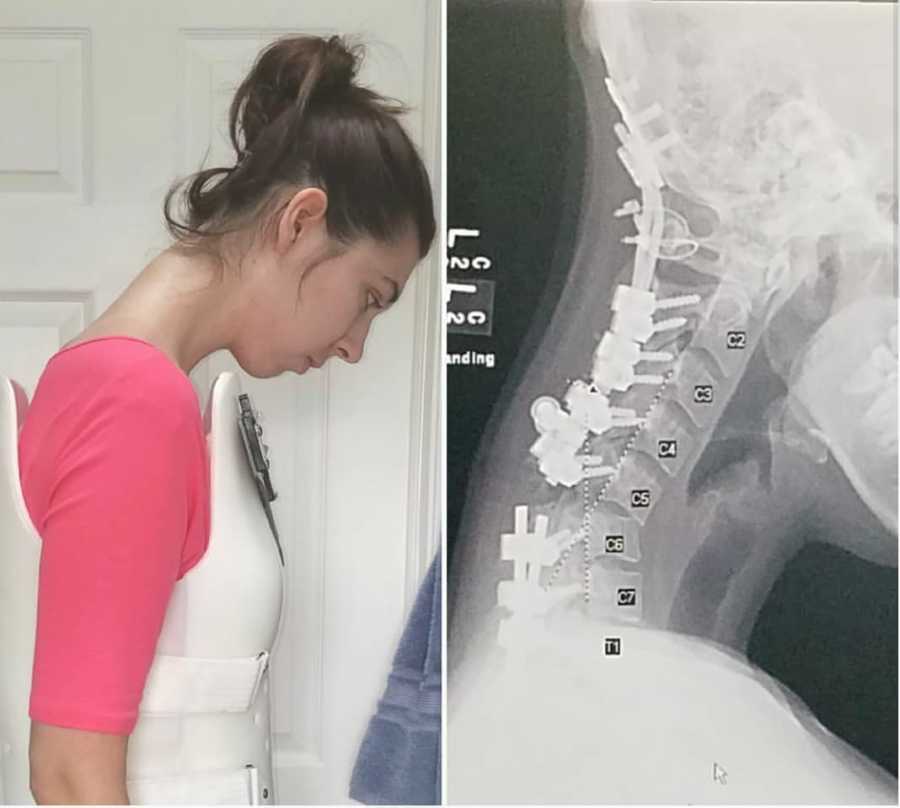
After having my ortho tell me I have EDS I met with an EDS geneticist. He diagnosed me via symptoms, physical exam, and family history. The reason my genetic blood panel came back normal in 2007 is because I have hypermobility type of EDS. Learning the gene wasn’t identified was huge. It took 10 years for me to be diagnosed. It always makes me wonder where I would be now had I known this back in 2007. Would I have required so many shoulder surgeries? Would the surgeries have been done differently? What about the rehab? I guess I’ll never know. My geneticist referred me to a neurosurgeon because he too said there was a serious problem with my neck.
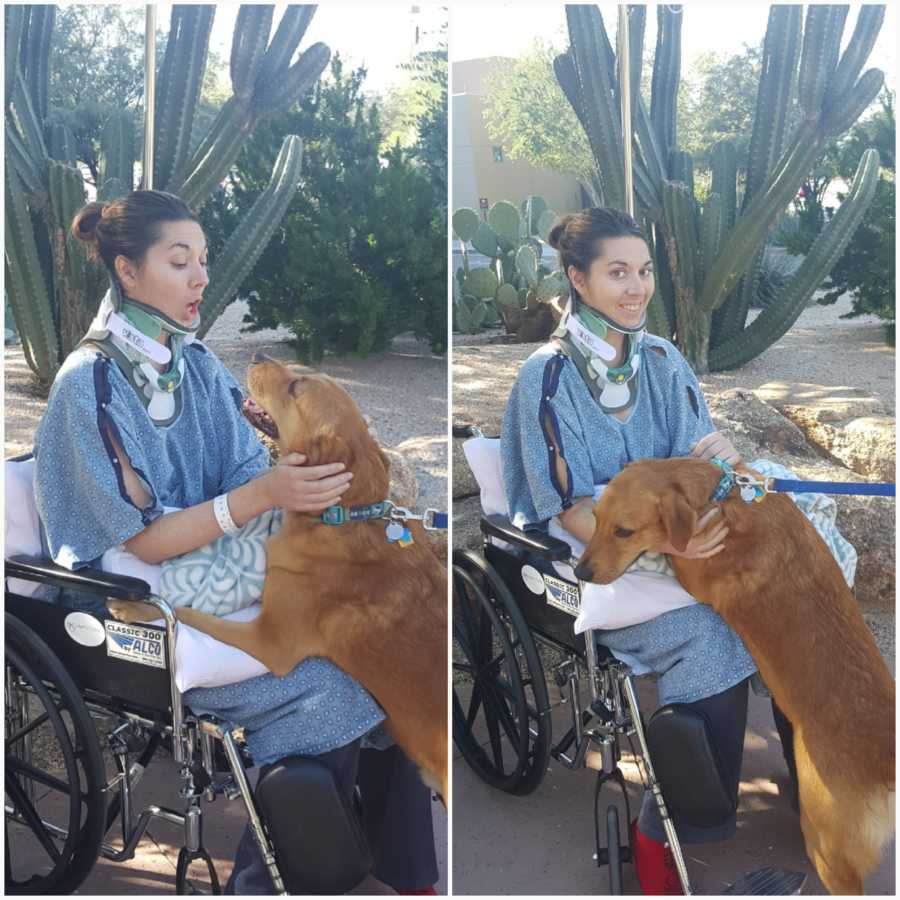
In December 2015 I met with my 10th spine doctor. It ended up being 10 because I was either not believed or the doctor didn’t know what to do. The tenth surgeon evaluated my neck and said there’s a serious problem. A movement fluoroscopy was scheduled to see what was happening when I would move my neck. This type of test shows what is happening as you move in real time. The test revealed when I move my neck forward, I was subluxating at C3-C4, C4-C5, dislocating at C5-C6, C6-C7, C7-T1, and subluxating at T1-T2. I was told, ‘We didn’t want your head to pop off,’ so on April 5, 2016, a halo brace was screwed into my skull with 4 screws to completely immobilize my neck. The halo gave me the ability to say more or less traction. My surgeon found the sweet spot on the first try. For the first time in 4 years I had no pain in my neck. On April 12, 2016, my neck was fused from C3-T2. I was supposed to wear the halo for only 4 months, but come the day of my halo brace removal, there was a serious problem.
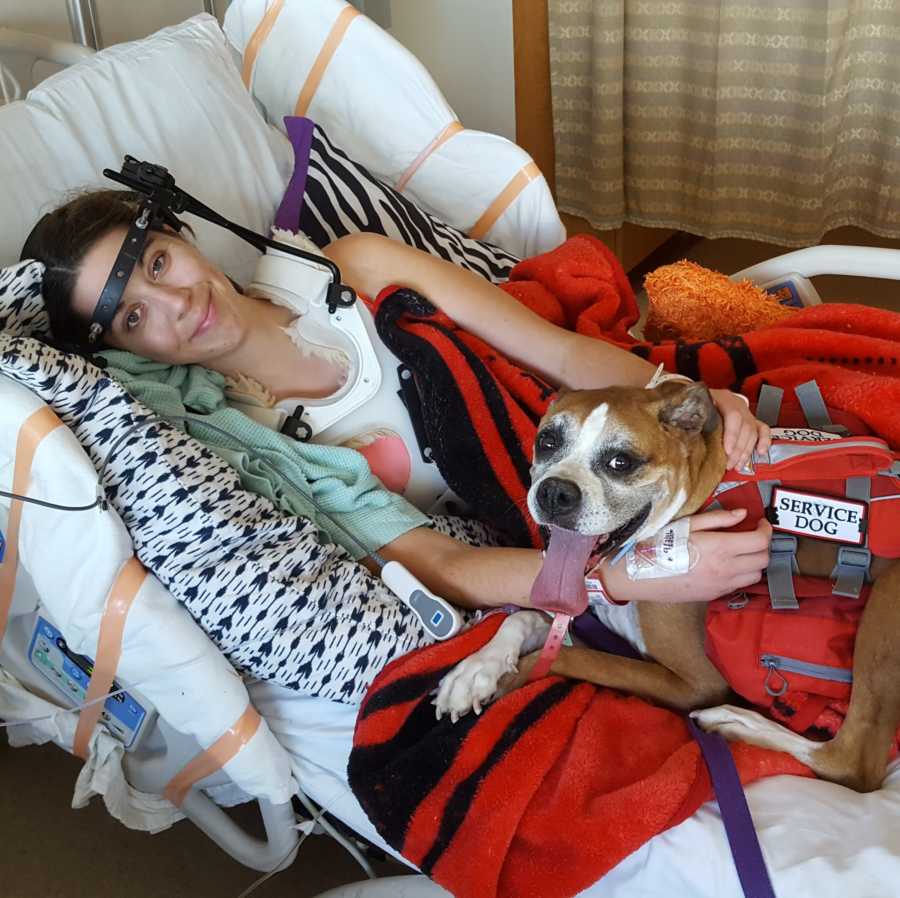
On August 25, 2016, I went to my surgeon’s office to have the halo brace removed. When the front two bars were loosened, I felt my skull-C2 slide into my throat. I immediately started gagging and pushed my chair on its hind legs to let gravity move my skull back. Every time I brought my chair forward, I started gagging. I couldn’t walk, let alone stand on my own. I had neurological symptoms down the right side of my body. The halo brace was immediately tightened back on and I was diagnosed with craniocervical instability (instability from your skull-C2). Five days later I was in surgery to fuse my skull-C5. The surgery went well. I wore the halo brace for 4 more months and wore a CTO brace afterwards to immobilize my skull and thoracic spine.
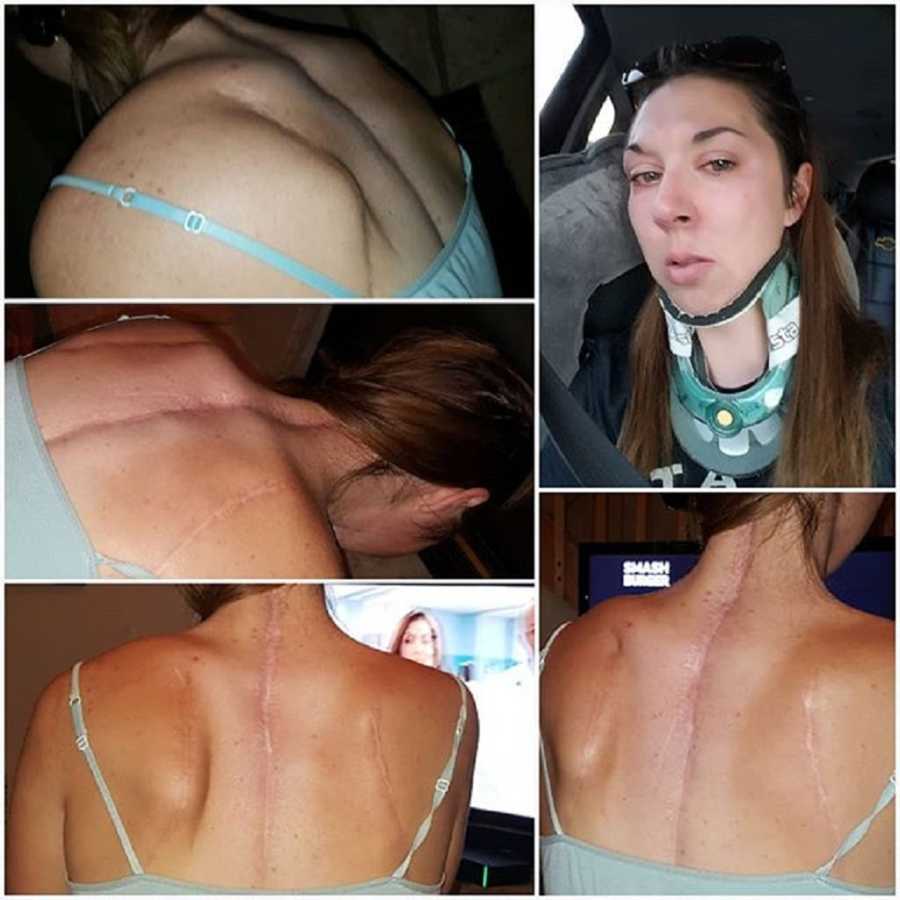
I wish I could say that was the end of my spinal journey; being fused skull-T2. Unfortunately, that’s not the case. At the beginning of 2017 I started to develop scoliosis and my spine was becoming unstable below my fusion. In September 2017 I was fused from C6-L2. One week after I was discharged from the hospital my neck broke at C5/C6. In October 2017 I was put in a halo brace for a second time to stabilize my neck because I had, ‘Dangerously life-threatening instability’ – nobody could believe I had walked into the emergency room. For all practical purposes I should have been paralyzed from the shoulders down, or worse. I had surgery to stabilize C5/C6. Unfortunately, the surgery failed. I was in surgery once again November 2017 to revise C3-T3. I was in the hospital for 2 months fall of 2017.
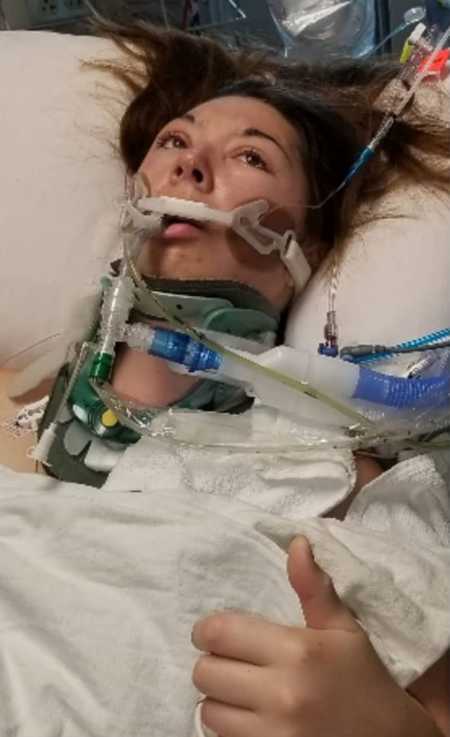
It’s sad to say 2018 wasn’t the successful year I had hoped it would be. My spine continued to have problems. The rods in my back were bending forward. I couldn’t lay my head flat on the ground. Despite having rods in my back I was able to move my skull and other parts of my spine. This fusion failed. I was devastated. I had just had all this surgery and found myself back at square one.
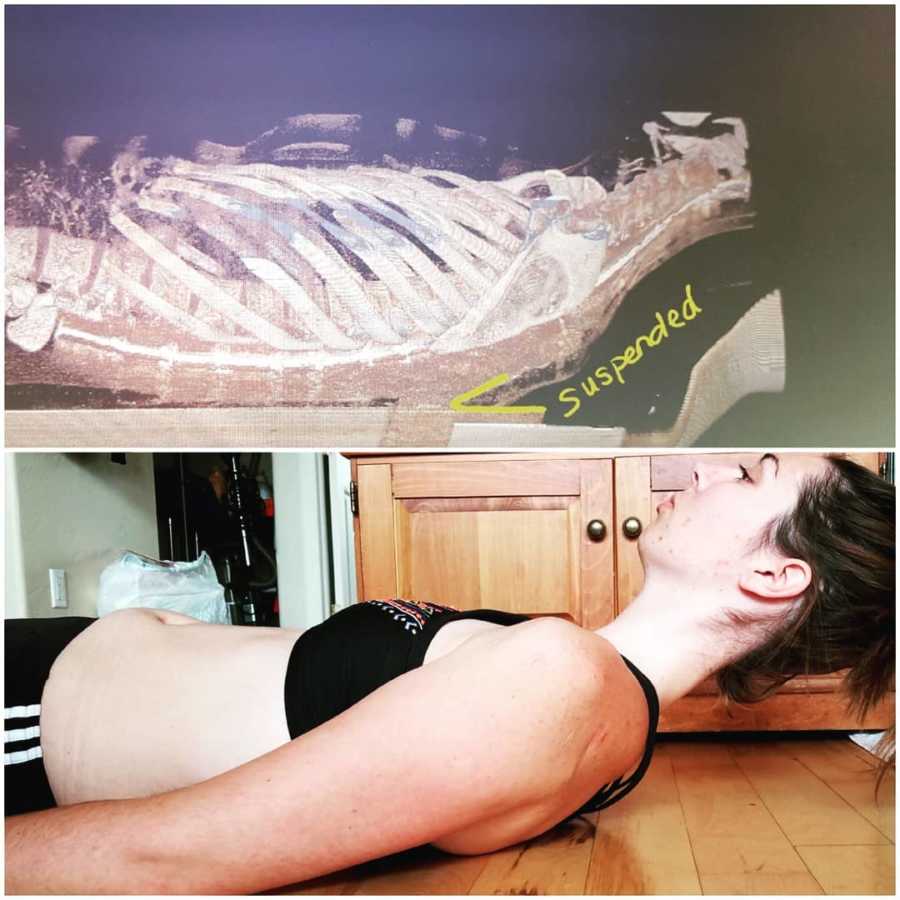
It was hard to accept and I couldn’t believe this was happening to me. As I write this, I am recovering from my sixth spinal fusion which was done October 30, 2018. All hardware from my skull-L2 was removed. Stronger instrumentation was placed in my spine from my skull-L3. It has not been easy at all but fortunately I have noticed improvements with my new fusion.
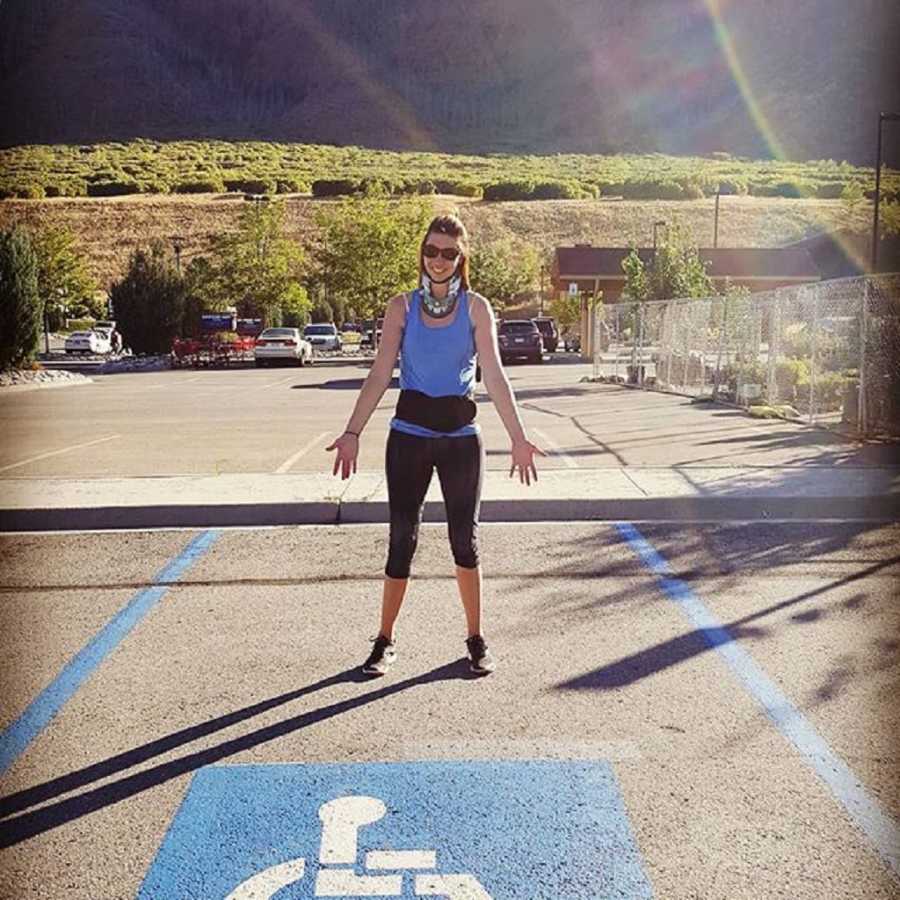
Navigating life with an invisible illness has its challenges because you look ‘healthy.’ Many with an invisible illness are very good at hiding their pain. They smile. It’s amazing what a smile can hide. In nature, EDS is an invisible illness; it’s the bracing or mobility aids that make it apparent. No two cases of EDS are the same; therefore, there can be no ‘face’ to EDS. Since there is such a broad spectrum in presentation of symptoms it can make getting a diagnosis difficult. There is no cure for EDS at this point. I’m hoping that will change as more awareness is raised. For me, it’s a conscious choice to raise awareness for EDS. I think it’s important to share the good and the bad to help people understand.
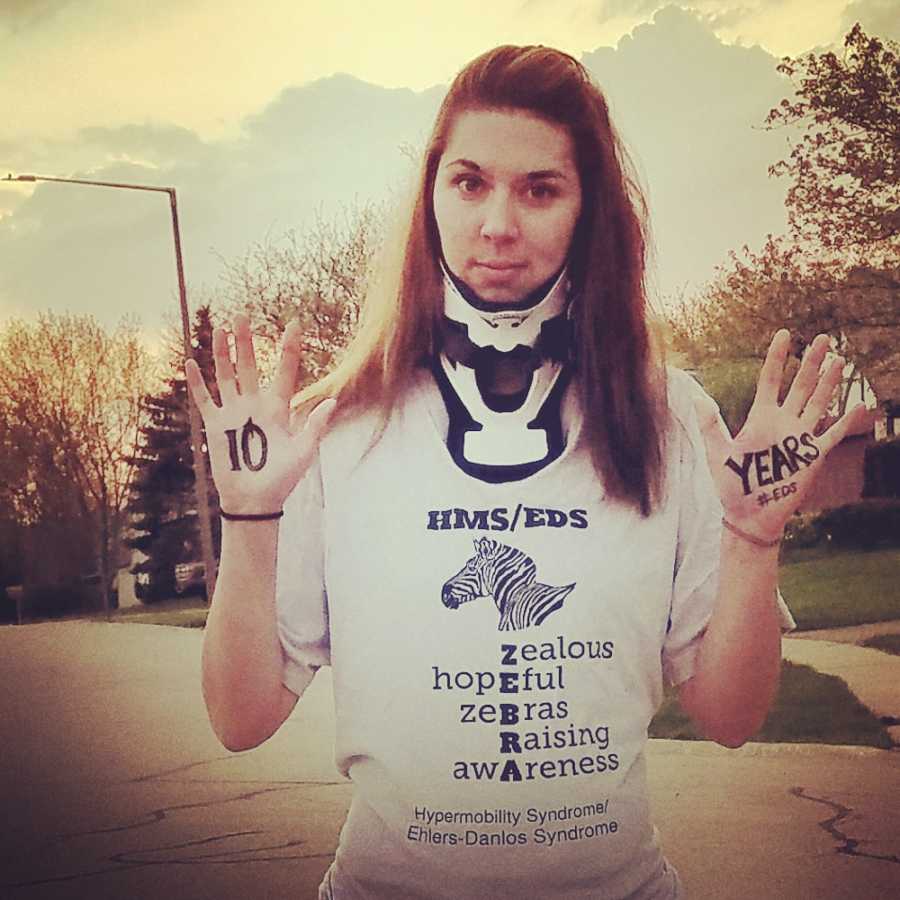
Sharing my journey on Instagram and other social media platforms has helped many, including myself. People ask me where I get the strength to keep moving forward and where I find the strength to share the reality of the hardships. I don’t know where the strength comes from. My family, my faith, and my friends seem to give me enough strength to get through each and every day. My goal has always been to help one person. If something good comes out of sharing my journey, then it’s worth it. I’m happy when I hear someone found answers, or finds encouragement. People don’t realize how lonely medical lifestyles can be. It’s not an easy journey. There are a lot of bad days, but there are also a lot of good days. Life with EDS isn’t easy. Every day it’s a goal to find daily joy. Every day it’s a goal to not lose hope.
I have to believe it will get better, and I know it will in some capacity. My favorite quote is, ‘Life isn’t about waiting for the storm to pass…it’s about learning to dance in the rain,’ by Vivian Greene. If I hadn’t taken the time to dance in the rain and I instead put my life on hold, I would have denied myself 13 years of amazing experiences called life.”
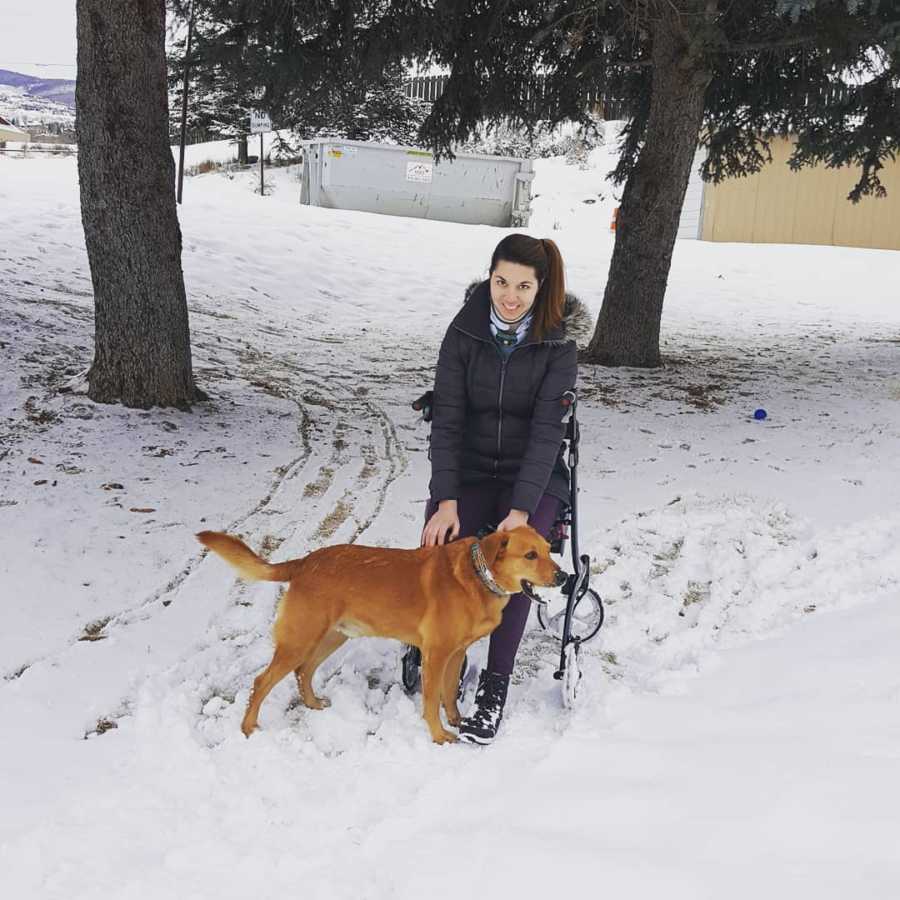
This story was submitted to Love What Matters by Megan King of Illiniois. You can follow her journey on Instagram. Submit your own story here, and subscribe to our best stories in our free newsletter here.
Read more stories from Megan here:
Provide strength and encouragement for others. SHARE this story on Facebook with your friends and family.

